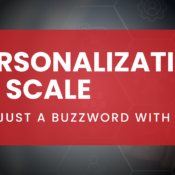/
/
Target Vehicle-Specific Search Queries in Paid Search
People are searching for the vehicles you have in your inventory. For example, someone is searching for (and wants to buy) a 2011 Meindl 246i ('cause it's just about the coolest car never made).
If a dealer who had that vehicle in stock were to create an ad specifically for the 2011 Meindl 246i and target keywords like "2011 meindl 246i" and send visitors to the exact vehicle mentioned in the ad, really good things would happen.
Because the dealer's ad would be shown only to people searching for a 2011 Meindl 246i and the ad would be extremely relevant to those people, the ad would experience a high Click-Through Rate relative to other ads in the same position targeting the same keyword. And because CTR is the single most important factor in Quality Score and, by extension, Ad Rank, the ad would experience a relatively low Cost Per Click and, subsequently, a relatively higher position.
This boils down to more clicks for less money. If each of the advertisers above have the same budget, say $1000, the dealer paying $4.26/click will receive 235 clicks. However, the dealer paying $1.13/click will receive 885 clicks; nearly 4 times the number of clicks for the same cost! And if both advertisers experience the same conversion rate, the advertiser paying $1.13/click will also obtain nearly 4 times the number of sales from paid search ads, as well!
This hypothetical scenario underscores the importance of targeting your ads and keywords to the specific vehicles in your inventory.
I'm just gonna come right out and say it: Don't even bother trying to do this manually. I mean, if you only have three or four vehicles in you inventory at any given time, then sure, you could (and probably should) manage these ads manually. But I'm guessing you've got somewhere between 100-500 or more new and used vehicles on your lot. And you're likely selling and acquiring quite a few vehicles each day. It would be more costly to pay someone to manually manage your ads and keywords than to pay for a software as a service that will automate the whole process.
An automated dynamic inventory-based ad management system works as follows:
- You supply the system with your inventory feed. For example, for VIN NINJA we acquire your inventory through HomeNet. (HomeNet can extract your inventory from your DMS, your website, or a variety of other sources.)
- You create ad and keyword templates. These templates include placeholders that will be replaced with vehicle information from your feed. For example, the template for an ad headline might look like:
{condition} {year} {make} {model} - The system would then generate ads and keywords for each of the vehicles in your inventory, replacing the placeholders with the respective information from each vehicle.
Used 2011 Meindl 246i - When you acquire a new vehicle and it appears in your feed, the system creates a new ad.
- When you sell a vehicle, the corresponding ad is removed.
Recent Posts
Mudd Advertising
Mudd Advertising is Partnering with Equifax
Mudd Advertising
Personalization at Scale—Not Just a Buzzword
Mudd Advertising
The Death of Impressions: The Rise of Outcomes
All Categories
Tags
aia ads
automotive
ctv
digital marketing
direct mail
direct marketing
display
display ads
dynamic inventory display
email
email marketing
EV marketing
facebook
gbp
google analytics
google my business
google my business inventory
google shopping ads
internet marketing
local seo
MUDDid
mudd id
online marketing
pay per click
performance max
pmax
pop
ppc
radio
retargeting
search engine marketing
search engine optimization
sem
seo
social
social media
social media marketing
traditional marketing
traditional media
ux management
vehicle listing ads
video advertising
video production
vla
web ux




